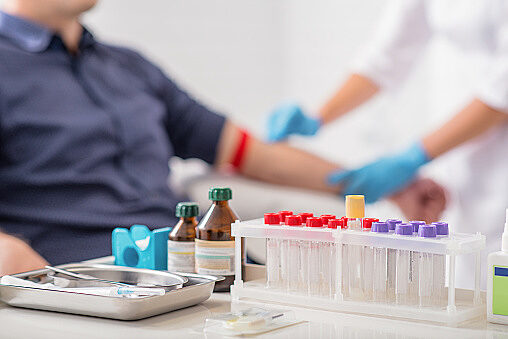Weighty Choices: Selecting Optimal G-CSF Doses for Stem Cell Mobilization to Optimize Yield

Nosha Farhadfar, MD, and colleagues at University of Florida Health Cancer Center led a study conducted by an international team of researchers using data reported to the Center for International Blood and Marrow Transplant Research. The study led to important, practice-changing discoveries about obese and morbidly obese stem cell donors, which she presented at the American Society of Hematology, or ASH, Annual Meeting in December 2018. Allogeneic stem cell transplant is the only curative option for many patients with leukemia or lymphoma. Obese and morbidly obese individuals make up about 40% of the U.S. population, and this percentage is expected to grow in the near term. Thus, understanding the impact that obesity has on stem cell donation is critical.
In a landmark study that involved over 20,000 unrelated peripheral blood stem cell donors, Farhadfar and colleagues identified an important difference between obese/morbidly obese stem cell donors and donors with a lower body mass index: The stem cell yield is significantly higher among obese/morbidly obese donors. This may be due to the chronic low-grade inflammation present in obese/morbidly obese individuals, leading to an increase in the number of circulating progenitor cells.
Prior to stem cell collection, donors are injected with a medication known as granulocyte colony-stimulating factor to mobilize their stem cells from the bone marrow to the peripheral blood, to increase the yield of stem cell collection. Granulocyte colony-stimulating factor agents are dosed by body weight; thus, heavier donors receive higher doses. However, the researchers observed that increasing the daily granulocyte colony-stimulating factor dose above 780 g/day for obese donors and 900 g/day for morbidly obese donors did not increase stem cell yield. Furthermore, obese/morbidly obese donors were more likely to experience treatment–associated toxicity, including pain, fatigue and insomnia. Farhadfar observes, “There is a maximum effective G-CSF dose for peripheral blood stem cell mobilization in obese and morbidly obese donors where higher doses add no additional benefit and may result in more complications.”
These results suggest that weight-based doing of granulocyte colony-stimulating factor is unnecessary for obese/morbidly obese individuals, as higher doses do not improve stem cell yields and contribute to toxicity. Thus, to improve the quality of life of obese/morbidly obese unrelated stem cell donors, “Consideration to reduce granulocyte colony-stimulating factor doses in obese and morbidly obese donors should be evaluated to allow for improved donor safety without compromising apheresis efficiency,” says Farhadfar.